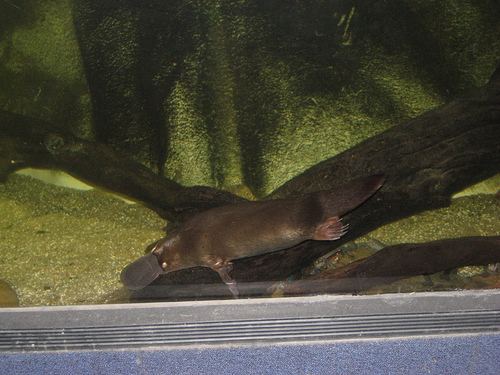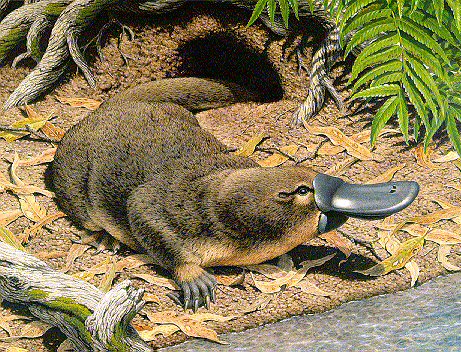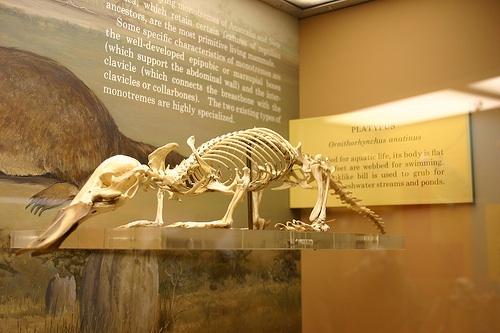Ornithorhynchidae - We are all beak and poisonous hoofs
There is only one species in this family. What an animal indeed! It lives like an otter; lays eggs like a bird; stings like a gila monster; and finds food by generating electricity. Can it get more exciting and unreal!!! Read on, and see the other little secrets hiding in this redoubtable little mammal.
Ornithorhynchus anatinus



Characteristics
Platypus means flat foot in latin. When this animal was first dicovered, in 1798, it was considered someone's idea of a great fraud or a bad joke depending on their point of view. The cool domed heads in London were definitely not impressed by this lack of courtesy from our Lord. How can a creature like this exist in God's creation that is orderly ( until then folks were rather hung up on the literal words of the scripture)!! The general opinion has not changed much since. However, the bizzare mashing up of many reptilian, bird-like and mammalian characteristics are not even found in the other order of mammals which puts the playpus in a class of its own. These animals lay eggs and nurse their young with milk produced from pours in their skin. The platypus has four legs which extend horizontally from its body. This arrangement makes it walk on land with a shuffle like a lizard.
Their other great adaptation, the beak, helps them hunt for worms and other small animals hiding beneath the steam bed. They have eletroreceptors capable of detecting small electric charges created by any change in current caused by small prey. This amazing adaptation is said to have evolved in the near evolutionary past( that means a few million years) ago.
Behavior
The platypus makes burrows that have multiple entries and most of them lead inside the stream that it inhabits. It is completely adapted to its aquatic habitat and has webbed feet and very good vision( very possibly they can see in color). It has no external ears but is very good at detecting sound. Their diet consist mostly of invertebrates,fish and sometimes frogs.
The male of the species has a horny spur on its feet that it can use to inject venom while fighting. This poison is quite potent enough to kill small mammals and cause an unwary human lots of immediate pain. It is not known to be deadly to adult humans but one would definitely be well advised to keep one's distance.
Level of threat
This species does not seem to be threatened in the wild and large enough populations seem to exist to guarantee its survival. The only thing that could threaten this charming animal is the slow drying up of the continent in which it lives.
Videos